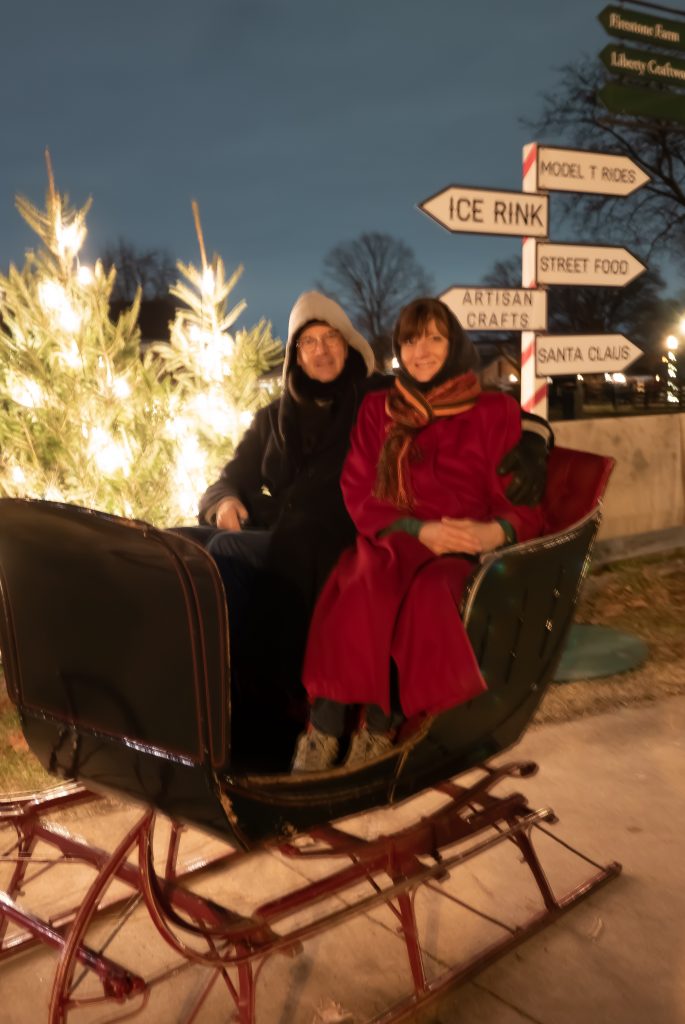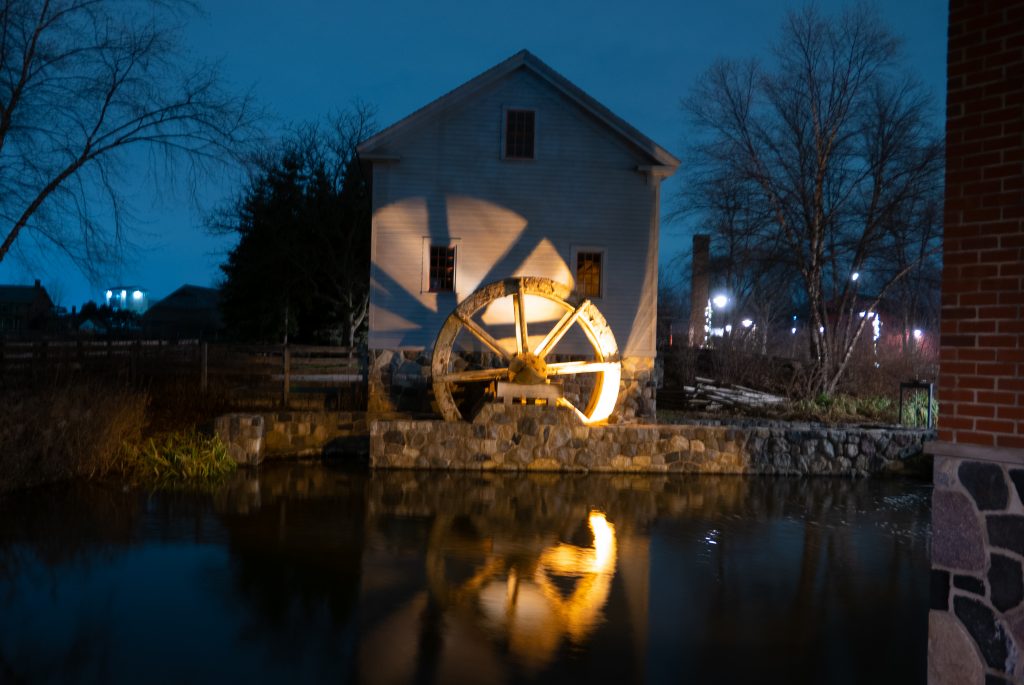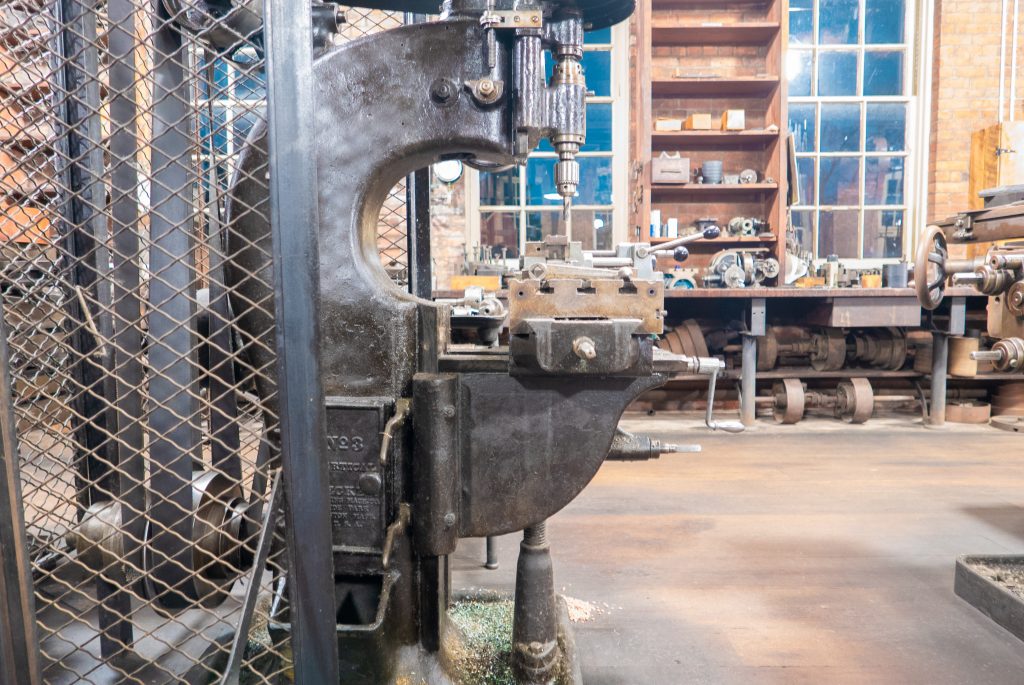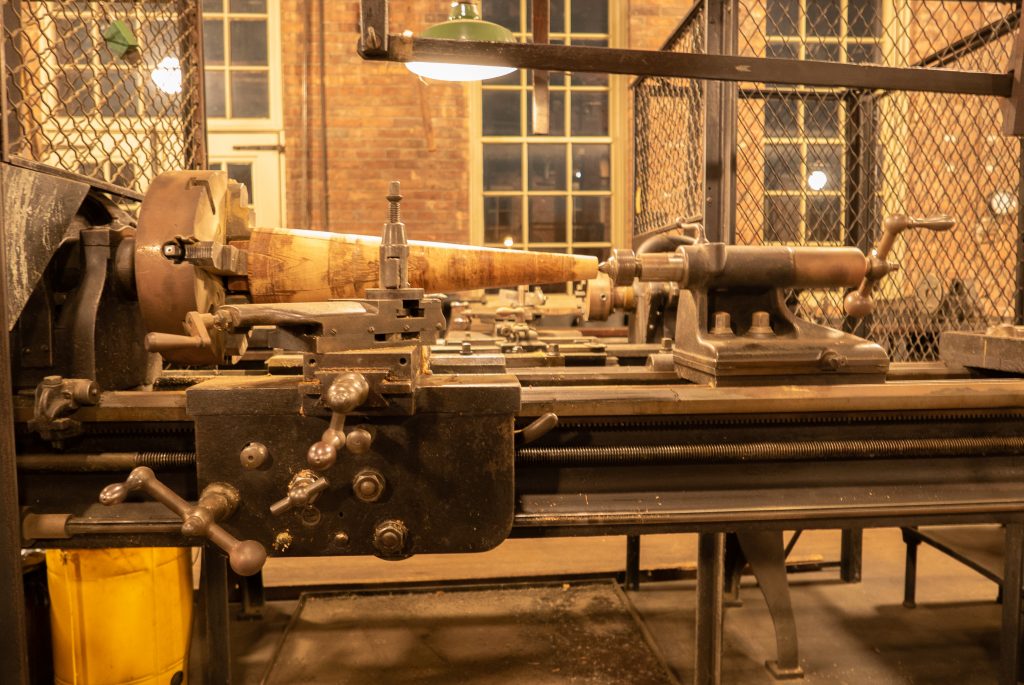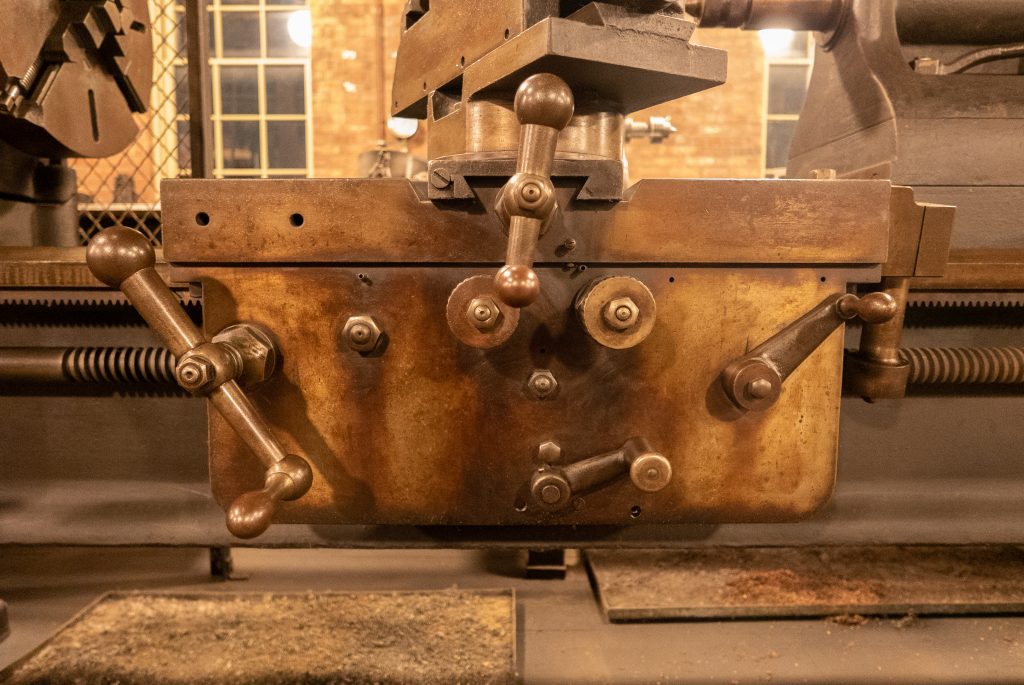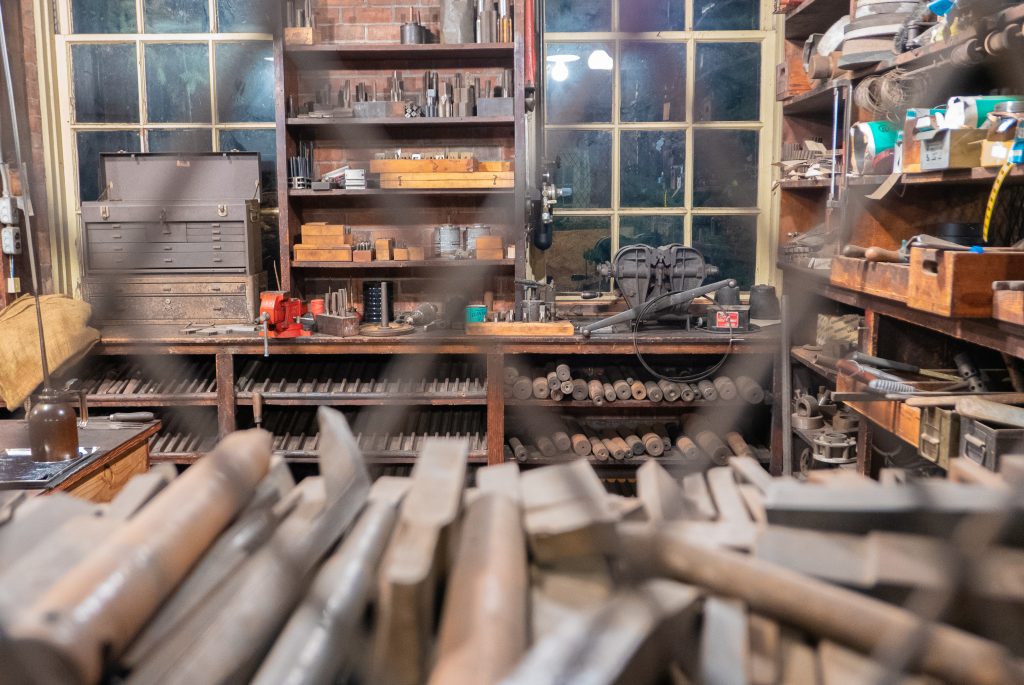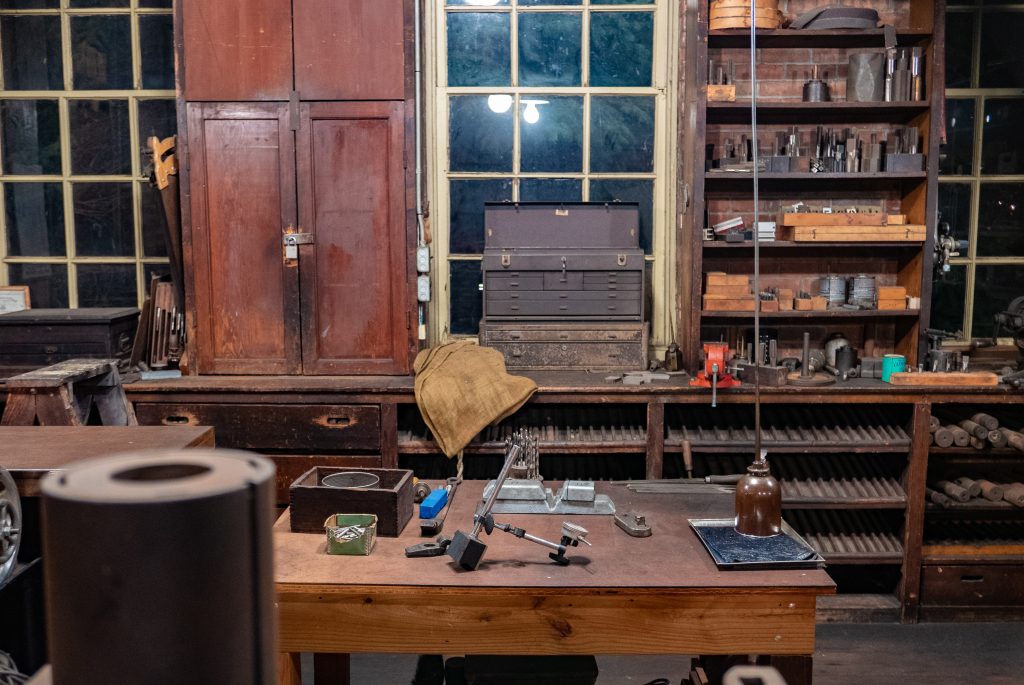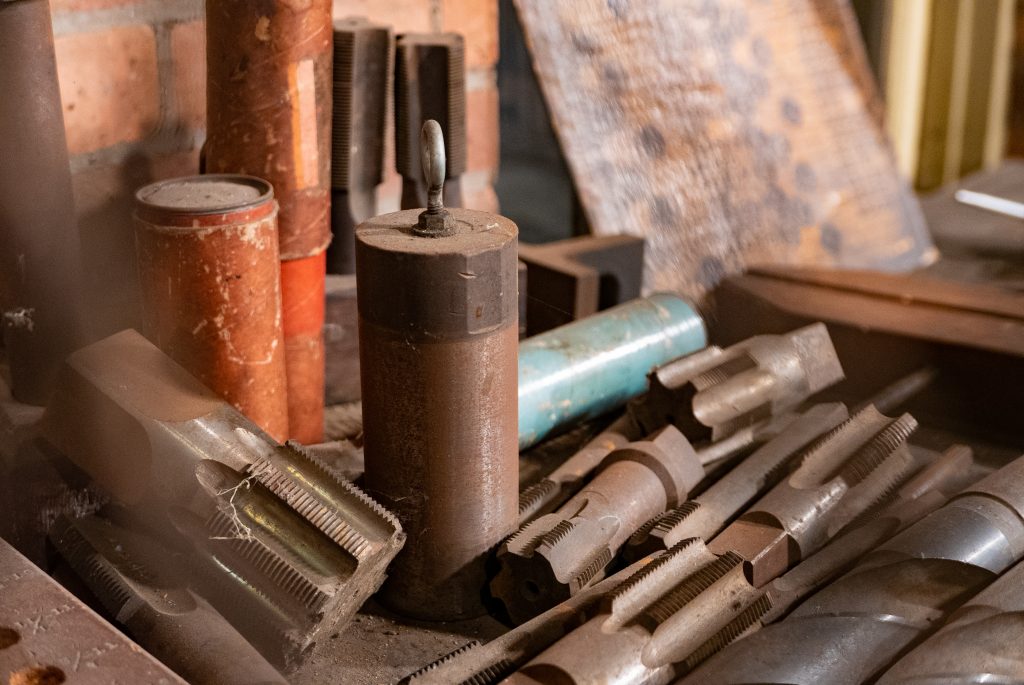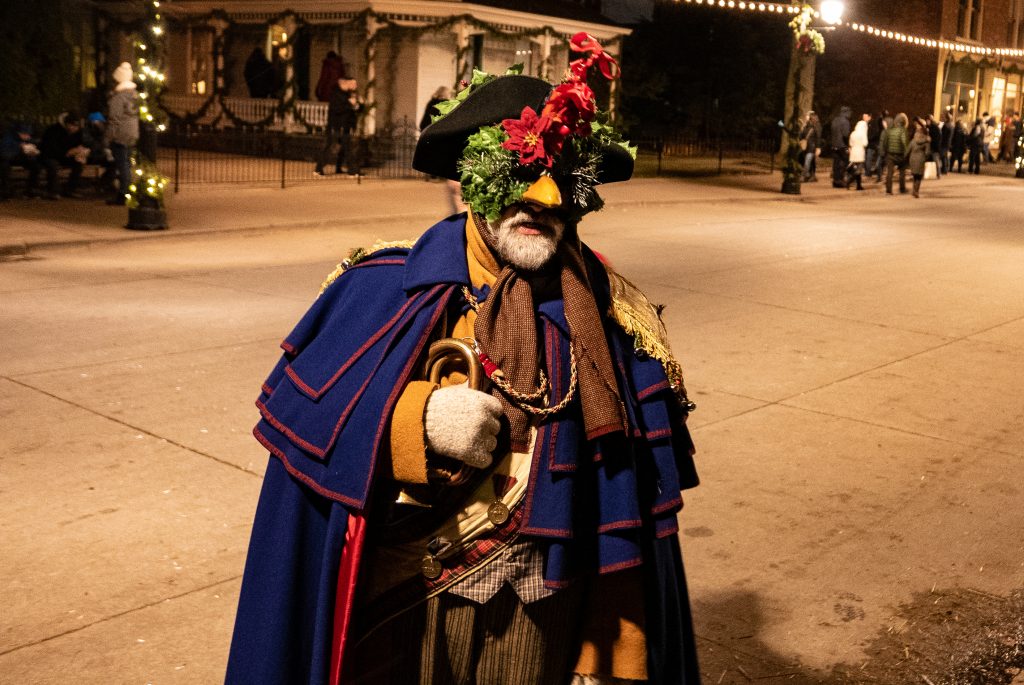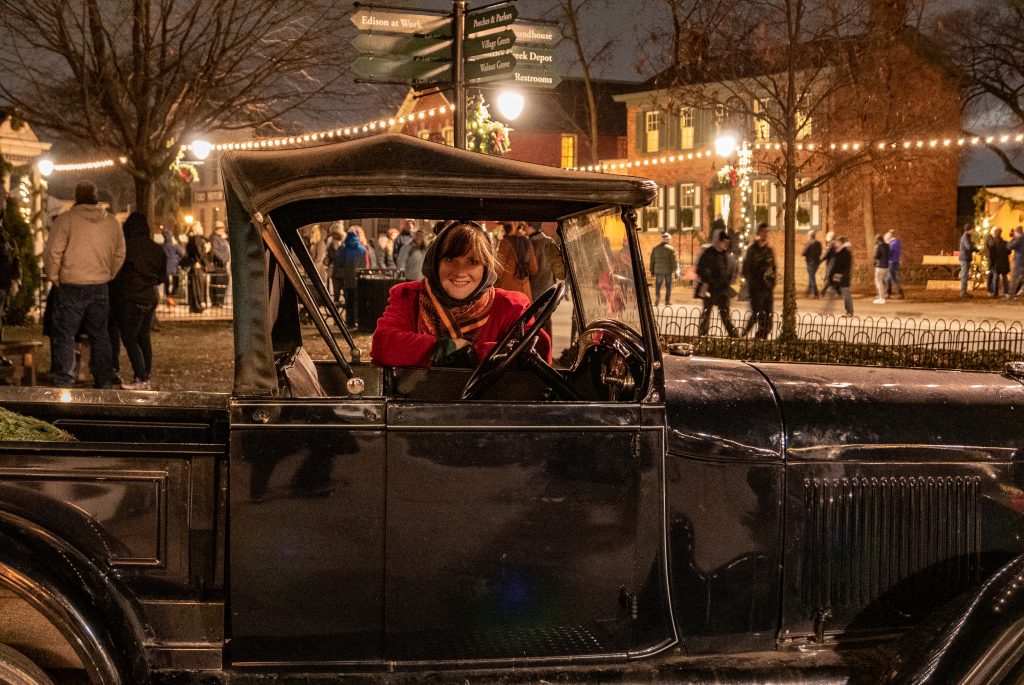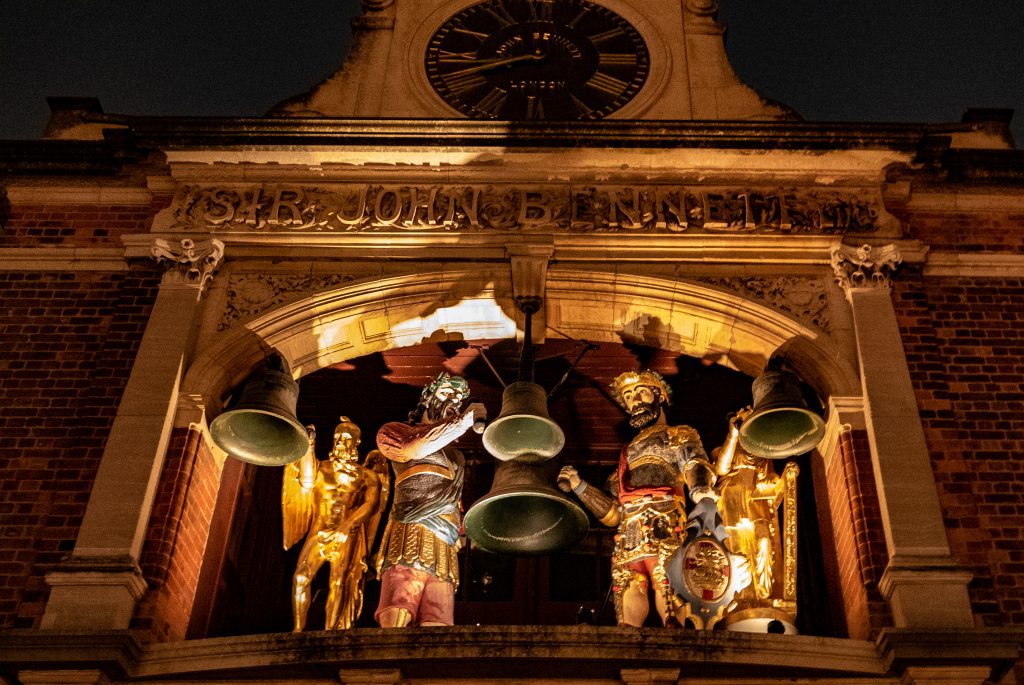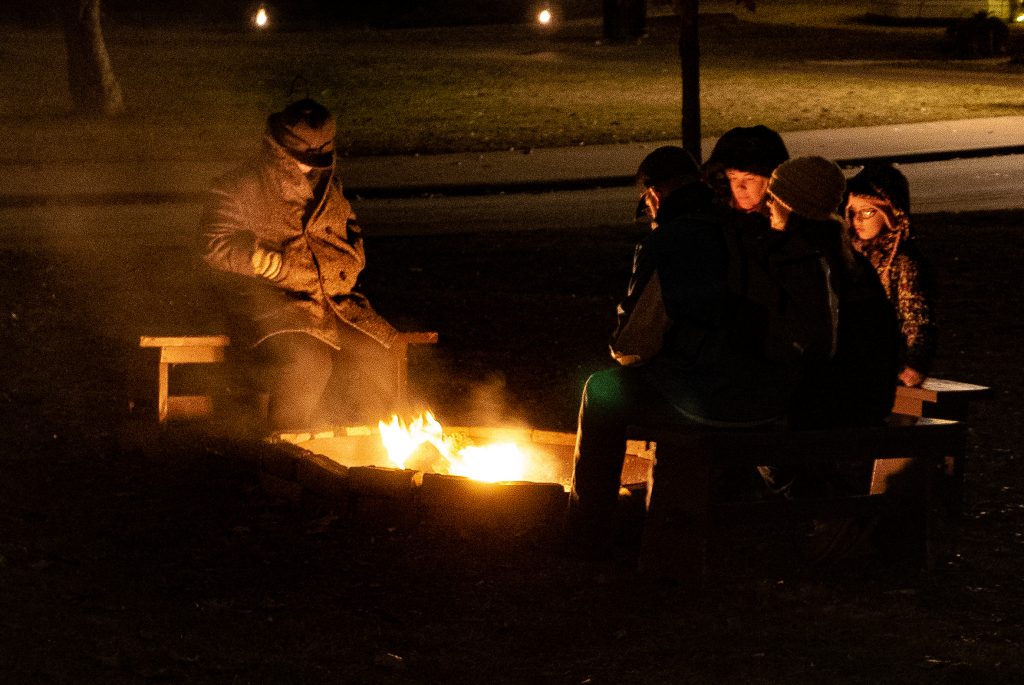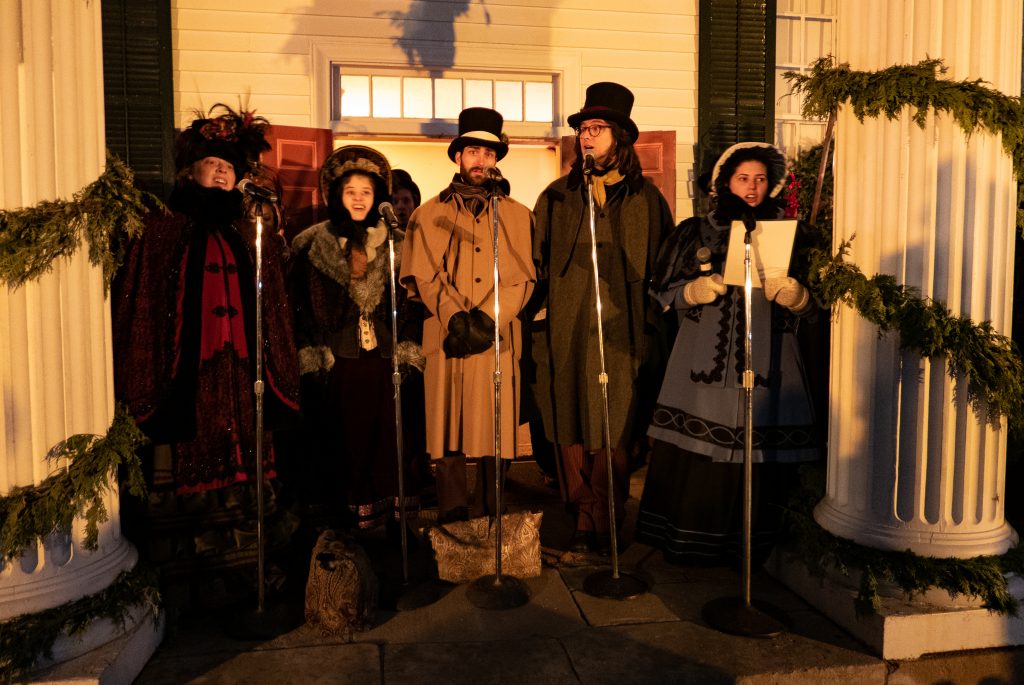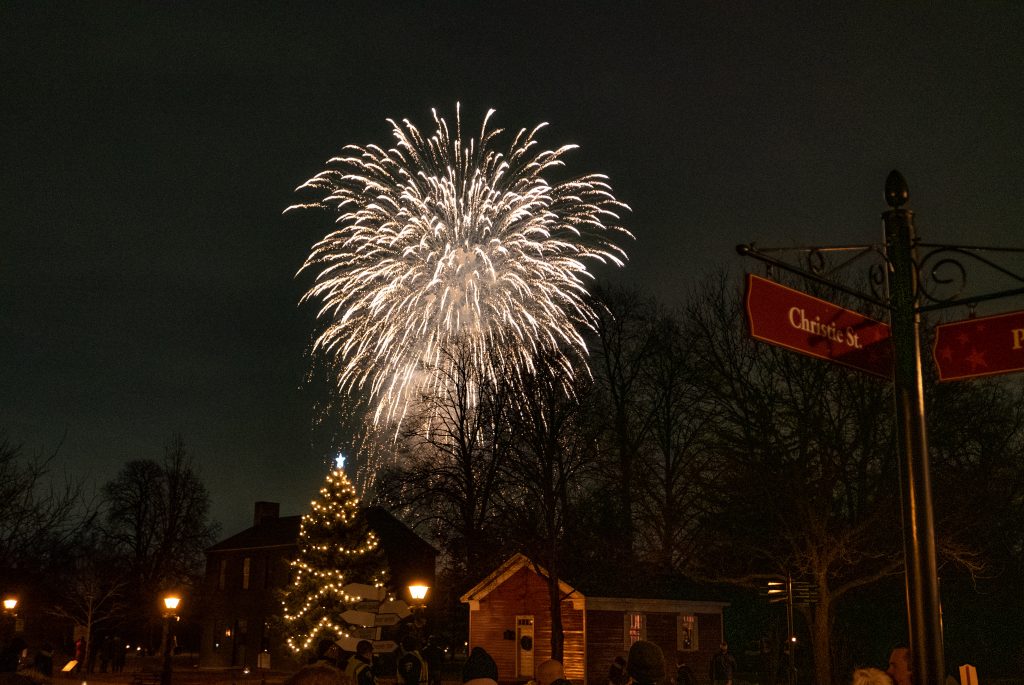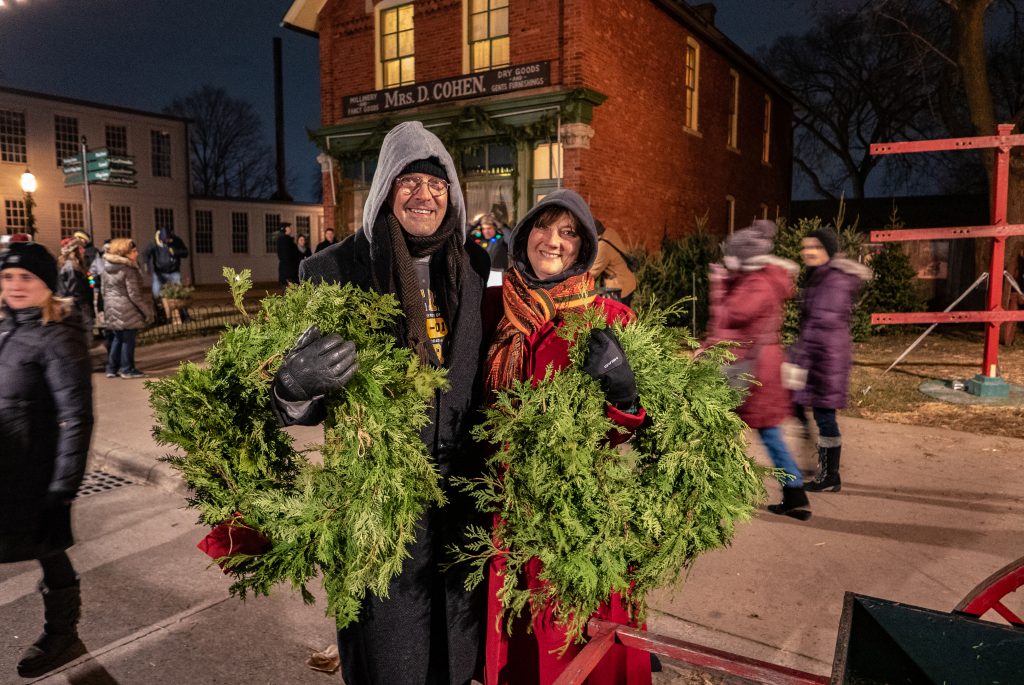I call wherever I’m living “home” no matter where it is. But when I think of home at Christmastime, I think only of Toledo, Ohio. It’s where I spent my first 21 Christmases and, years later, where I spent 15 Christmases with my sons. Those memories are among my happiest. What is home if not a place in the mind to return to?
This year, Toledo was home to a spontaneous demonstration of the authentic, noncommercial holiday spirit. It erupted by a drugstore in a nondescript desert of concrete at the intersection of Art and Whimsy.
It began with a weed, a homely stalk that had stubbornly pushed its way up through a crack in a tiny pedestrian island at the corner of Alexis and Secor. The weed wasn’t very tall or especially beautiful. But 20-year old Alyssa Emrick saw it and was moved to show it some love. She hung a few ornaments on it and left, little knowing that what she’d done was about to inspire the whole city.
Others saw what Alyssa had done and were moved to add their own decorations. They contributed stuffed animals, baseballs, handbills, representations of Jesus, peace signs, cans of soda, American flags, beads, straw, marbles, buttons, dolls, tinsel, business cards, stars, lace, fuzzy dice, crosses, and playing cards.
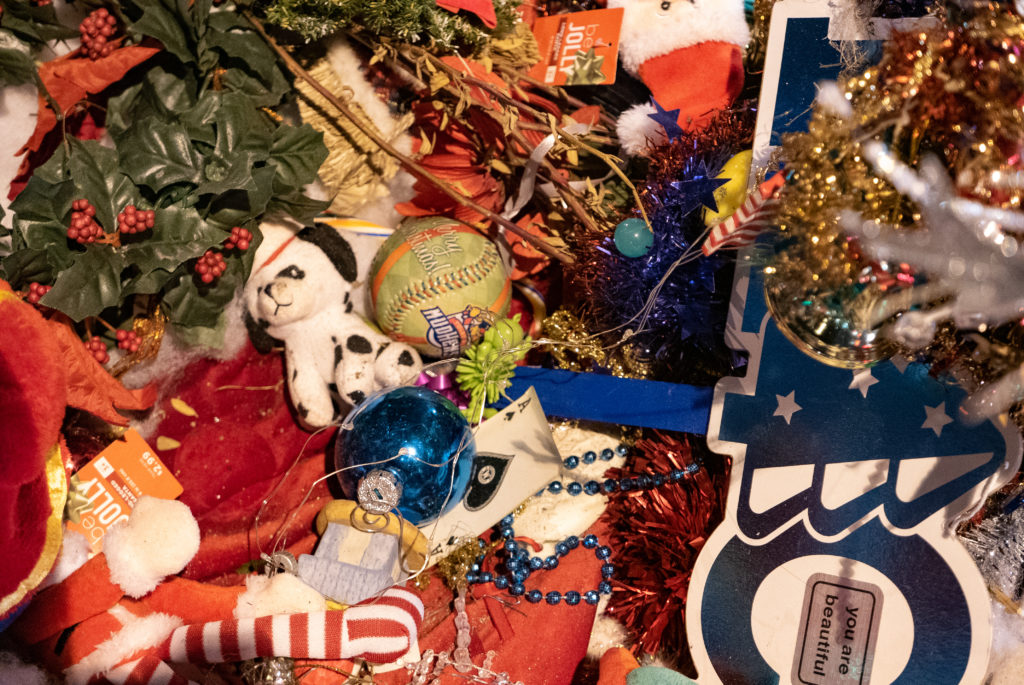


When the decorations became so numerous that they obscured the little tree, people began to decorate the nearby light pole.
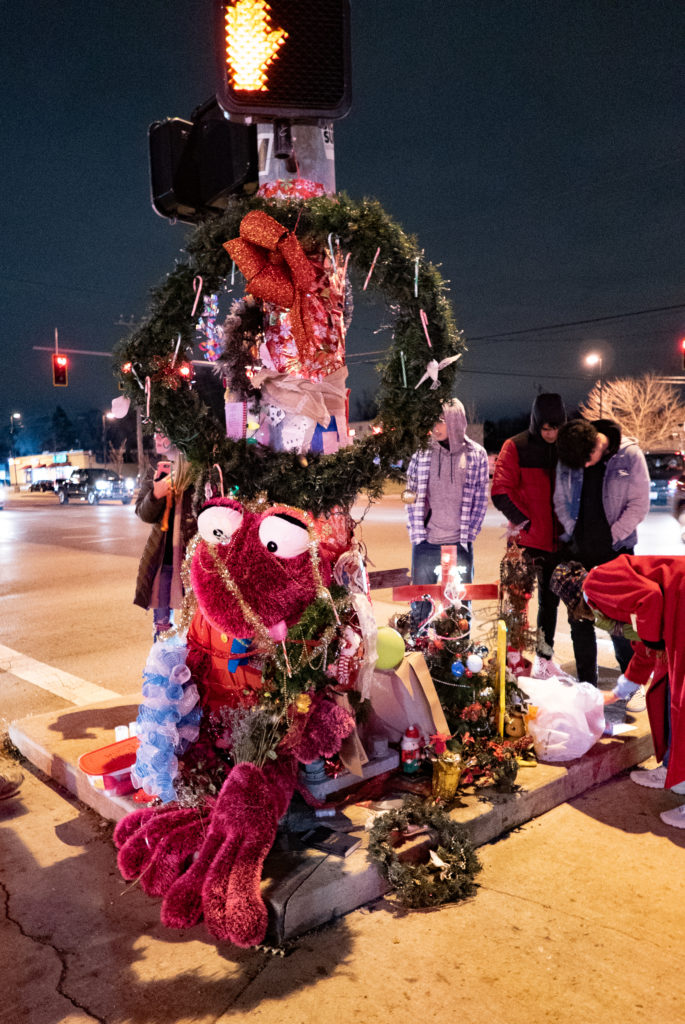
Someone put up a traditional Christmas tree in on a strip of grass in front of the drugstore. Local charities encouraged people to bring presents for the needy and place them around the tree. A pit bull rescue group collected food and toys for homeless dogs and cats. Choral groups came and sang Christmas carols while the traffic whizzed by.
Toledoans felt connected to this real-life realization of Charles Shultz’s parable about the meaning of Christmas. Maybe this is because Toledo itself is a little like Charlie Brown’s Christmas tree: a bit homely, frequently passed over, but still loved. We can identify with that.
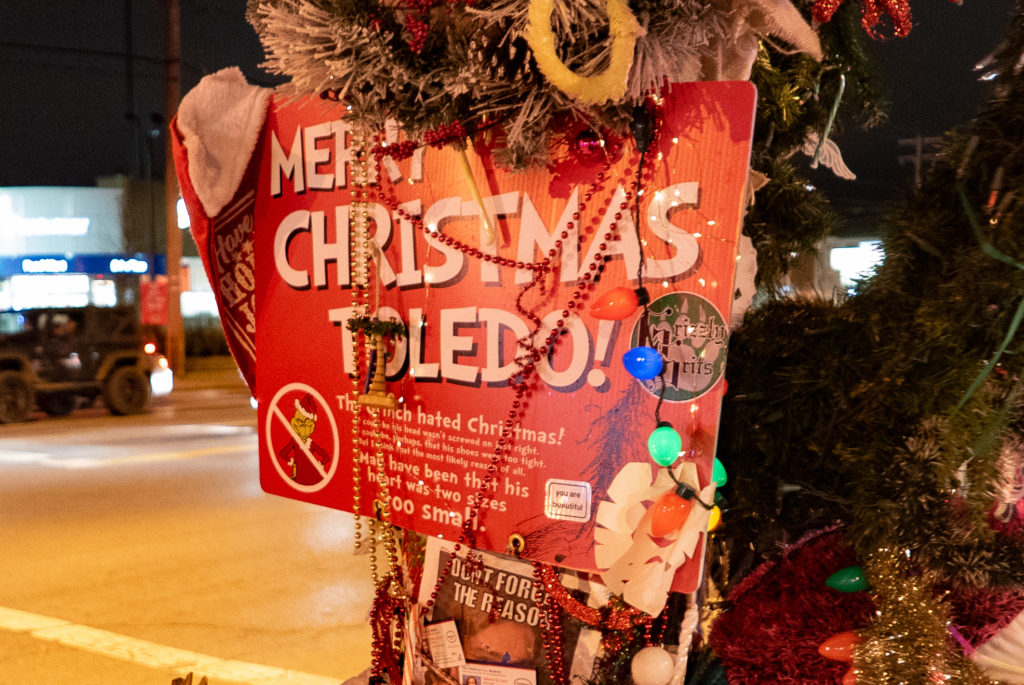
The growing folk art display attracted attention, first by the local media and then nationally. Soon the Toledo Weed Tree had its own Facebook page that now has over 13,000 followers. It became, improbably, a place of pride for a city that is often better known — if it is known at all — as an unfortunate example of the deindustrialization of the American midwest.
On Christmas eve, I made a pilgrimage to the Toledo weed tree along with Lori Seubert and Spencer Trumm. We dropped off our donations. We talked with strangers. A local bicycle sharing organization gave us cups of hot cocoa and a pizzeria offered everyone free slices. Lori sang some Christmas carols. We talked to a man who’d taken it upon himself to tend the weed tree every day and to wrap presents that people brought for needy families. At that moment, that urban intersection felt, improbably, like home.
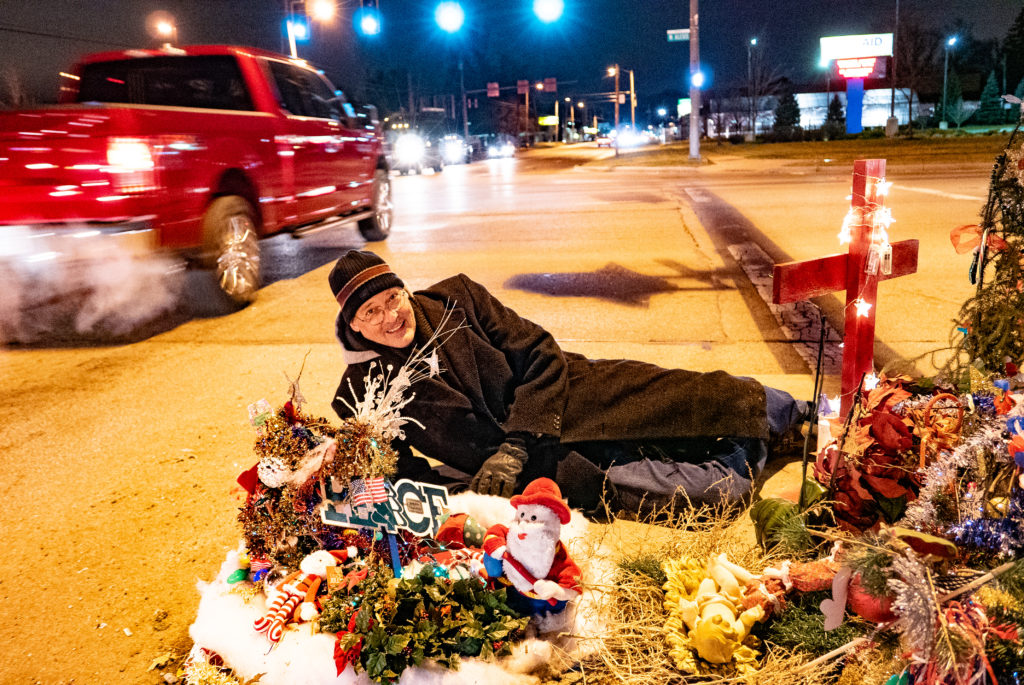
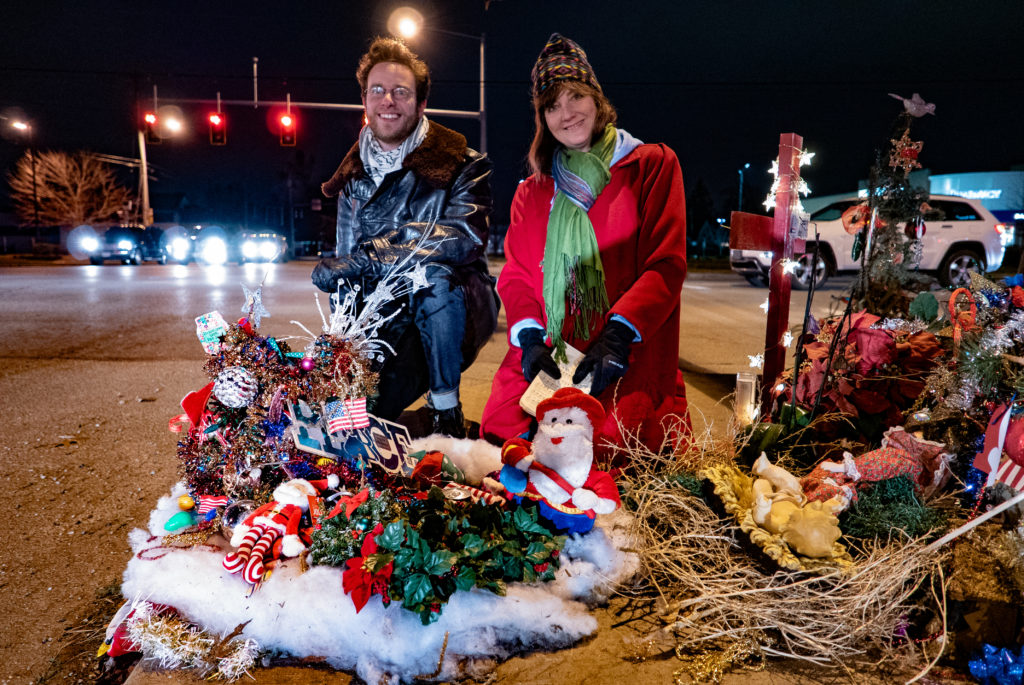
There was no snow at Christmas in Toledo. I was disappointed. Having spent most of my life in the northern clines of northwest Ohio, Massachusetts, and Maine, I associate the winter holidays with landscapes blanketed in white. But seeing the Christmas Weed Tree put me into the spirit of the season nonetheless.
